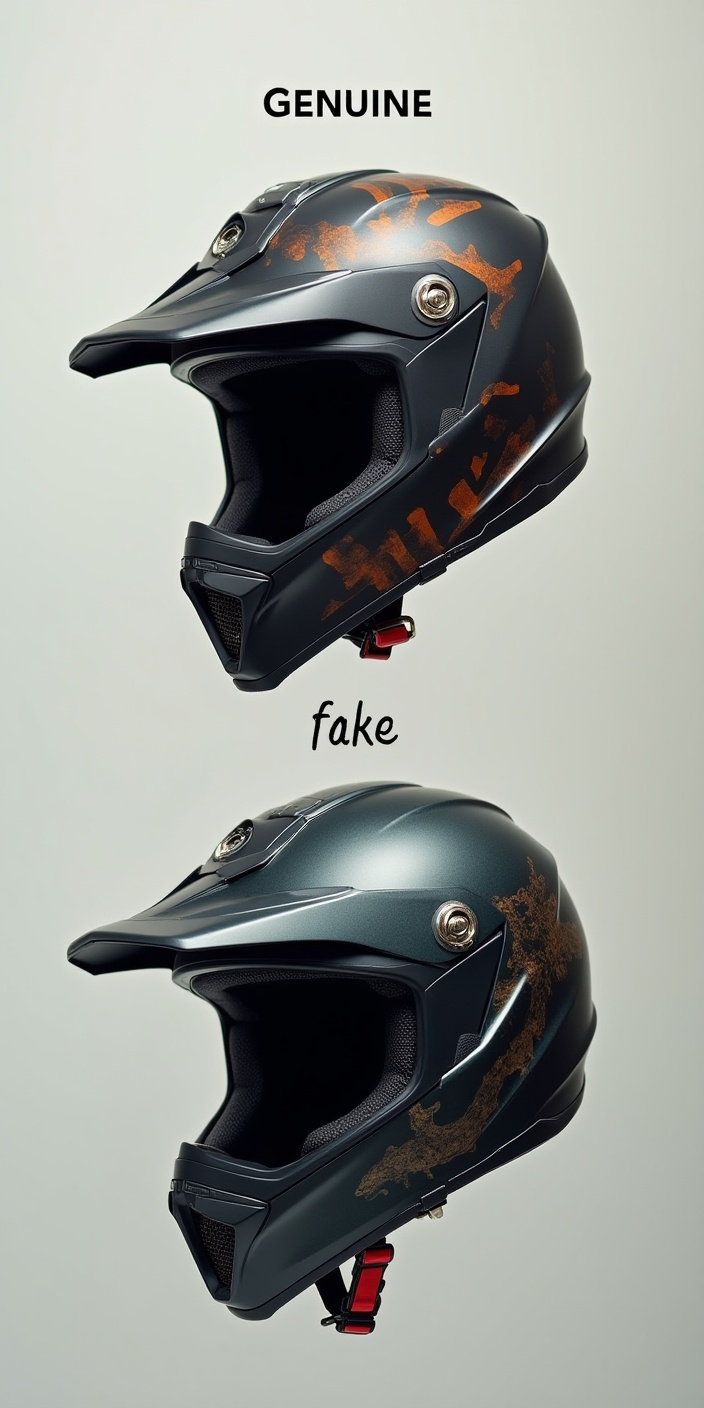With the rise of fake helmets in the market, knowing how to spot counterfeit motorcycle helmets in India is crucial for your safety. Counterfeit helmets may look convincing but can fail catastrophically in an accident. Here’s how to protect yourself and ensure your helmet is truly safe.
1. Check for Authentic Safety Certifications
The most reliable way to begin counterfeit helmet identification markers is by inspecting the safety certification. In India, only ISI-certified helmets are legal. Look for the ISI mark and a clear, untampered code on the inside or back of the helmet. The code should match the Bureau of Indian Standards (BIS) requirements. For imported helmets, valid DOT, ECE or SNELL certifications are also recognised, but ISI is mandatory for road use in India. Always inspect for correct markings and valid documentation, as explained in this ReiseMoto guide to helmet safety certifications.
2. Examine Build Quality and Materials
Genuine vs fake helmet differences are often visible in the build quality. Genuine helmets use high-quality materials, have smooth finishes, and precise seams. Counterfeit helmets may have rough edges, uneven paint, or flimsy straps. Check for imperfections, loose padding, or cheap plastic parts—these are red flags for fakes.
3. Inspect Labels, Holograms and Serial Numbers
Authentic helmets have high-quality labels, often with holograms, model numbers and unique serial codes. These are difficult to replicate. Use a UV light to check for hidden security features or holograms, as seen in premium brands. If the label looks like a cheap sticker, is peeling, or lacks detail, it’s likely a counterfeit.
4. Verify Certification Online
For advanced helmet safety certification verification, use official online tools. For example, the Snell Foundation offers a lookup tool to verify if a helmet’s certification number is valid. Always check the manufacturer’s website or certification authority to confirm the helmet model and serial number.
5. Be Wary of Price and Source
If a helmet is significantly cheaper than the market rate or sold by unauthorised dealers, it’s likely fake. Counterfeit helmets often flood the market due to a lack of enforcement and awareness, putting riders at risk. Buy only from trusted retailers or directly from the manufacturer.
6. Watch for Misuse of ISI Marks
The Bureau of Indian Standards (BIS) continues to monitor misuse of the ISI test mark. Since June 2021, all helmets sold in India must carry a valid ISI mark. If you suspect misuse or a fake mark, report it to the BIS or local authorities for inspection.
7. Ask for Documentation
Genuine helmets are usually sold with a warranty card, user manual, and certification details. Lack of documentation is a common sign of a fake.
Why Choose Reise Helmets?
When safety and authenticity matter, opt for trusted brands like Reise helmets. Reise helmets are designed and tested to meet Indian and international safety standards, featuring genuine ISI, DOT or ECE certifications, robust build quality and reliable after-sales support. By choosing Reise helmets, you ensure your gear is both protective and authentic, eliminating the risks associated with counterfeit products.
For more details on helmet standards and safety, refer to the Reise Moto blog on helmet safety certifications.
Conclusion
To spot counterfeit motorcycle helmets in India, always check for authentic certification marks, inspect build quality, verify labels and serial numbers, confirm certifications online and buy only from reputable sources. Understanding these counterfeit helmet identification markers and knowing the genuine vs fake helmet differences will help you ride safer and smarter. For guaranteed safety and peace of mind, choose Reise helmets for your next purchase.
-Team Reisemoto

